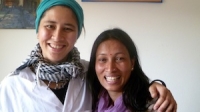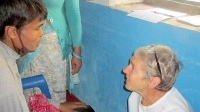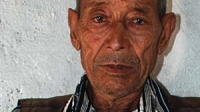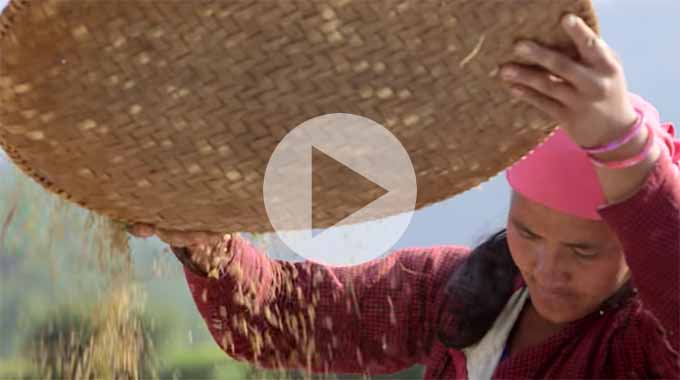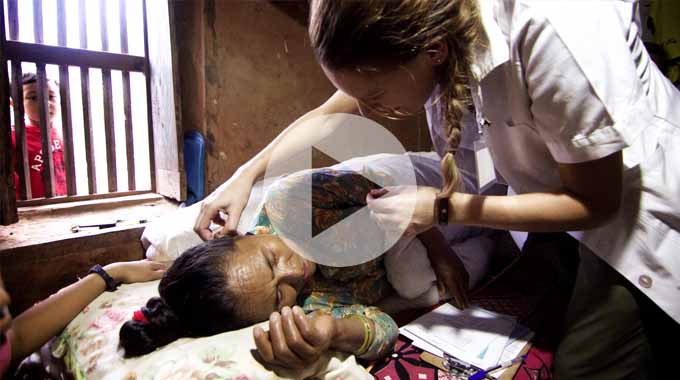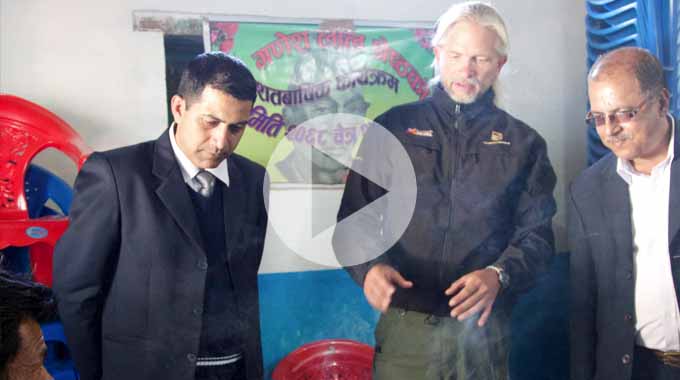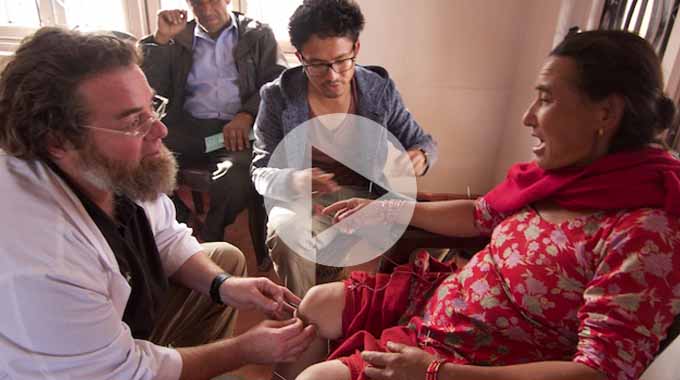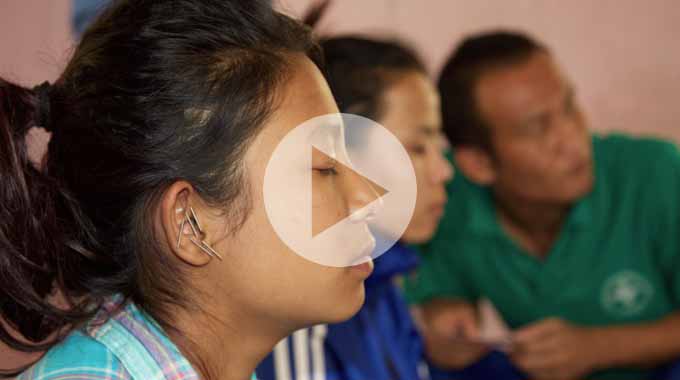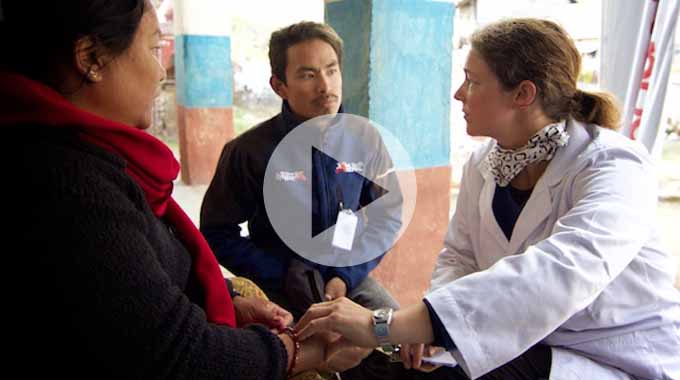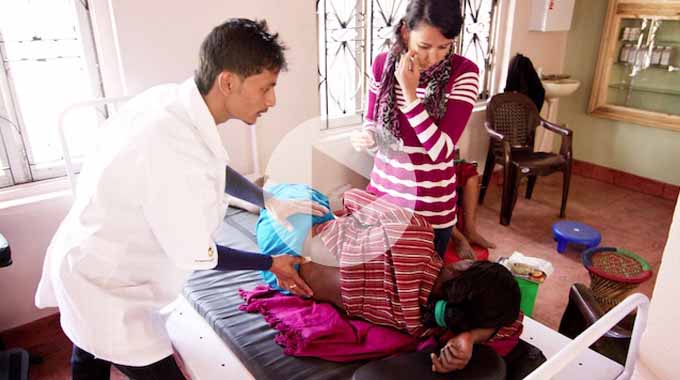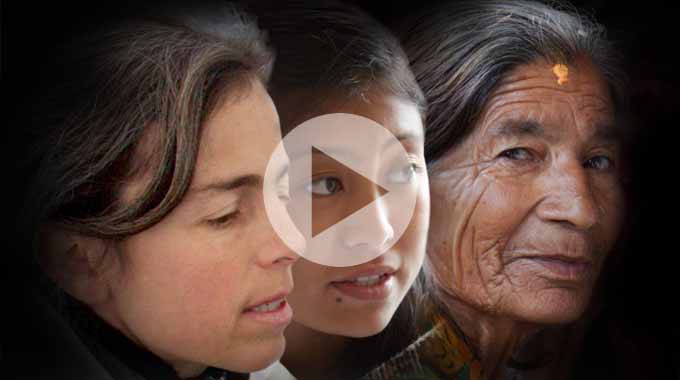Please read this in Ira Glass’s voice from This American Life. Thanks
“Act one. Act one… Into the Himalayas”
It’s been a wild month. After I last wrote, we had the clinic running at full capacity. Fortunately we had treatment plans in place for our patients over a 5 week period, because the two week national holiday of Doshain ensued. We shut the clinic down for the patients and interpreters celebration of the holiday.
So we took the chance to head to the Himalayas for some trekking (on our own dime). And, well, it was amazing.
“Act two, act two... Being a doctor"
The first epiphany; primary health care is very challenging. With a range of 17-25 patients a day I have a greater respect for primary care MD’s. There knowledge is insurmountable. And I am beginning to understand why MD’s rely on drugs so prevalently. Why they have to treat the way they do in an overcrowded health care system.
People who are sick want to be fixed ASAP and when you have many sick people and little time, you need all the help you can get, even if its just a band aid. You become a god to your patient when you provide the instant relief, of say a powerful antacid or PPI for GERD (heart burn). But it’s the easy fix which I see become the long term fix here, and in the states. The capitalistic buyout of medication intended for two weeks become a chronic purchase by the insurance company for Americans, only to lead to further problems down the road.
The beauty of what we are doing is following up week after week. Educating the patient, in the case of PPI’s; how to change the diet so that the stomach can repair on pharmaceuticals and then go off of them in two weeks, as originally designed.
So the thought and the philosophy of an instant fix is one to be pondered. It is time to question “medicine”, How it is practiced, and what the effective time spent with the patient is. Is that time and money put into creation and sale of the pharmaceutical or into the doctors treating the patient?
“Act Three of our program... when you hear hooves, think horses, not zebras.”
I am practicing slowing down. Everyday I become more and more confident with musculoskeletal injuries and orthopedic diagnosis, but when it comes to the internal medicine patients, I freeze as my mind races.
“I am here as a muscle guy not infectious disease specialist!” My mind shouts!
But my role is primary care. I have to fill these shoes and I have to come to terms that I do indeed have the education and tools to do it.
I am reminded I can observe the patient over a few days, this is rural health care. They have had this condition for 2 months, maybe two years, they won’t die tonight.
I determine the basics and look for red flags. Do they have a fever? Blood pressure to high? Too low? Blood sugar level? Vomiting? Diarrhea? Blood in urine?
The list goes on.
I can observe them closely over the next few days.
I change my thinking from an “alternative” practitioner in the states (who can get sued for making these decisions) to the role of the most educated medical provider in a 3 hour radius.
I have to recognize that many patients will most likely never visit a hospital because of their sect or class, which will get them blown off at the front desk or ignored by higher cast medical doctors. Or, illiterate, they won’t be able to read signs and will not find the correct wing of the hospital to enter!
I breath, and pick apart their presentation until I can make a working diagnosis. I chill them out with acupuncture needles and determine what is the best advice they need right now. And maybe my advice is the best medicine.
"Act Four, Act four... What is the world”

Epiphany number three is that of the organic idealist. I am rethinking how I live over here. I always thought farming and eating my own wild game in a “paleo diet” was the ideal lifestyle. Don’t get me wrong I encourage all gardening and hunting activities. I hope to enjoy some of that lifestyle in the future. But there are 7 billion people on this planet. And here 90% of the population farms, (not the Portland hipster farm of 4 Hop plants in the back yard, nor the Iowainian farmer who can hull 4 miles of corn in a day). Im talking rice fields tilled by hand and 150 pound loads carried not by water buffalo, but by auntie. It’s unreal, and as I squat over the local tea house toilet (hole in the ground), under a 4.5 foot ceiling, staring at a little faucet coming out of the wall, intended for washing my crack by hand. I realize that I have had it all too good.
My old obsession of allergy prevention through parasite infection have quickly disappeared. My patients arrive daily with all kinds of itchy skin and breathing issues, and there is no easy fix. My pondering of living old school, barefoot and wild, have all vanished. I stare at the farmers heels with vertical cracks resembling a map of the grand canyon. I sterilize and dress a 2 inch laceration on my patients arch from a sharp root(she doesn't even complain about her heels). Im grateful I can afford shoes.
How much water do I waste when I shower? How much toilet paper do I use!? How much energy do I waste using hot water? How do I have so many clothes! (a race t-shirt for everyday of the month!) How do I wash all those clothes!? How much packaging do I waste buying or eating anything, (we burn all of our trash here in a slow smolder and Kathmandu’s smog rolls into our valley every day.) How do I have such a new passion for mustard greens as my abdomen has become filled of rice and dal. How can chicken (mostly bones) taste so good once a week!? How can we eat so much meat in the U.S? How amazing is it that I can I get anywhere in Portland in one hour by public transport? How does my patient wake up at 4;30 am and walk 5hrs to the clinic to let me work on her arthritic knees with medial meniscus tears, and then walk 5hrs back home on those same knees?
It all seems so nuts!
And then I see the pollution of the candy wrappers on the unpaved streets. The infiltration of jean jackets, selfies, hair-gel and Facebook in the youth… the narcissism of a California dream infiltrates their minds (while their family still harvests everything by hand). Im puzzled, and think to Jared Diamond’s Collapse… Is this the end? The American dream and the want for more, engulfing the most rural minds. This setting which seems so sustainable and ideal is riddled with just as much danger as home. This little valley’s death toll from carbon monoxide poisoning (due to the lack of chimneys in homes) alone most likely equals the same number of murders per capita in my home town. Are humans doomed?
I look to my interpreters, born and raised in this small farming community. They all eagerly wait for me outside the clinic doors at 8;15 every morning. Wide eyed, grinning and ready to help, with every patient, every question and every needle. They own it. And I see the future isn’t so bleak.
---Ian Wilsonson

